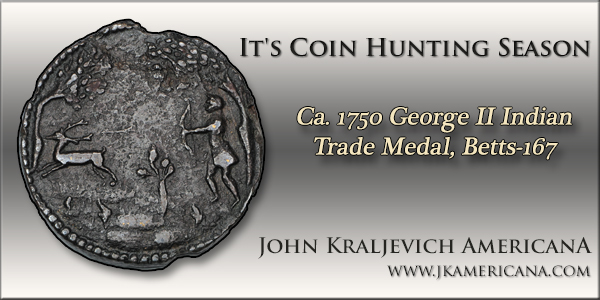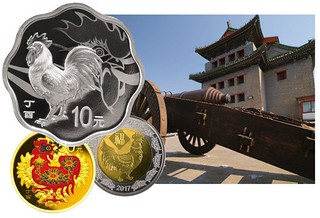
PREV ARTICLE
NEXT ARTICLE
FULL ISSUE
PREV FULL ISSUE
THE NUMISMATIC MUSEUMS OF BEIJINGAn article by peter Anthony on the NGC web site describes the numismatic museums of Beijing. -Editor
Silhouetted against the sky, one building stands out as our taxi slows to exit the freeway. I nod toward it and ask, “Is that where we are going?” “Yes,” my friend replies. The car turns, rolls across an overpass as ten lanes of Beijing vehicles rush by below, and drops us off along the edge of a busy traffic circle. On foot now, we gingerly thread our way toward the massive structure. A high stone wall crowds the curb and leaves us little room to avoid the cars that zip by. Its sheer face of carefully fitted charcoal-gray blocks calls to mind Mordor. We make haste to the safety of a broad landing area. There a sign announces, “Panoramic View of Beijing Ancient Coins.” From here it is just a few more paces to the entrance. Inside, shielded from traffic noise, is a peaceful courtyard lined with Magnolia trees. We are at the Deshengmen Gate. Once it was one of nine fortified entrances to the old city of Beijing. The nine gates were manned by crack troops, the toughest and best-trained in the emperor’s military. The gates controlled entry and egress to the capital city and were repeatedly the sites of pitched battles between Chinese defenders and Mongol bands from the north. Many gates are now completely gone, remembered only in the names of subway stations like Xuanwumen (pronounced Shwen-wu-men) and Fuchengmen. Fittingly, there is a fascinating military museum on an upper floor of the Deshengmen Gate fortress. On a clear day, a climb to the topmost parapet rewards a visitor with an outstanding view of the city, as well as an appreciation for what a formidable post this was. A couple of antique cannons reinforce the impression. At ground level, though, the former garrison is now dedicated to coins, not warfare. As the sign suggests most of the coins are ancient. Although, my interest is primarily modern Chinese coinage, the exhibits are excellently explained in English. They do a fine job of presenting the development of money in China and why numismatics is important to Chinese culture today. There is a good display of modern paper money, although the best collection in the world can be seen across town at the China Numismatic Museum. Beijing has two purely numismatic museums. The Beijing Ancient Coins Museum at Deshengmen Gate is part of the Beijing Municipal Administration of Cultural Heritage. Across town the China Numismatic Museum operates under the auspices of The People’s Bank of China, the nation’s central bank. Additionally, the National Museum has a major permanent numismatic display and coins are often seen at other institutions like the Capital Museum. To read the complete article, see:
 Wayne Homren, Editor The Numismatic Bibliomania Society is a non-profit organization promoting numismatic literature. See our web site at coinbooks.org. To submit items for publication in The E-Sylum, write to the Editor at this address: whomren@gmail.com To subscribe go to: https://my.binhost.com/lists/listinfo/esylum All Rights Reserved. NBS Home Page Contact the NBS webmaster 
|
